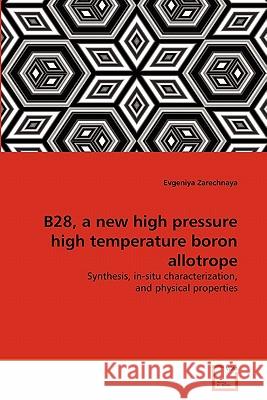B28, a new high pressure high temperature boron allotrope » książka
B28, a new high pressure high temperature boron allotrope
ISBN-13: 9783639308075 / Angielski / Miękka / 2010 / 156 str.
Boron is known for its structural complexity, unusual type of bonding, and for a rich variety of compounds that it forms. Until recently the existence of only two boron modifications obtained at ambient pressure, - and -rhombohedral boron, seemed to be proven beyond doubt. The goal of the presented research is a systematic investigation of boron's possible phase transformations under high pressure and temperature conditions. The major outcome of the study is the discovery of a new boron phase with 28 atoms in an orthorhombic unit cell. B28 exhibits striking physical properties. Its crystals are semiconducting and transparent in thin section. Because of its strong covalent bonding it has a high Vickers hardness of 58 GPa making it the second hardest elemental material after diamond. Combination of these properties makes the HP-B polymorph a prospective material for industrial applications. The book comprises description of experimental techniques employed for the study including HP, in-situ synthesis, powder and single crystal X-ray diffraction, spectroscopic and electron microscopic methods, and the theoretical basis of ab initio simulations involved in material characterization."
Boron is known for its structural complexity, unusual type of bonding, and for a rich variety of compounds that it forms. Until recently the existence of only two boron modifications obtained at ambient pressure, α- and β-rhombohedral boron, seemed to be proven beyond doubt. The goal of the presented research is a systematic investigation of borons possible phase transformations under high pressure and temperature conditions. The major outcome of the study is the discovery of a new boron phase with 28 atoms in an orthorhombic unit cell. B28 exhibits striking physical properties. Its crystals are semiconducting and transparent in thin section. Because of its strong covalent bonding it has a high Vickers hardness of 58 GPa making it the second hardest elemental material after diamond. Combination of these properties makes the HP-B polymorph a prospective material for industrial applications. The book comprises description of experimental techniques employed for the study including HP, in-situ synthesis, powder and single crystal X-ray diffraction, spectroscopic and electron microscopic methods, and the theoretical basis of ab initio simulations involved in material characterization.











